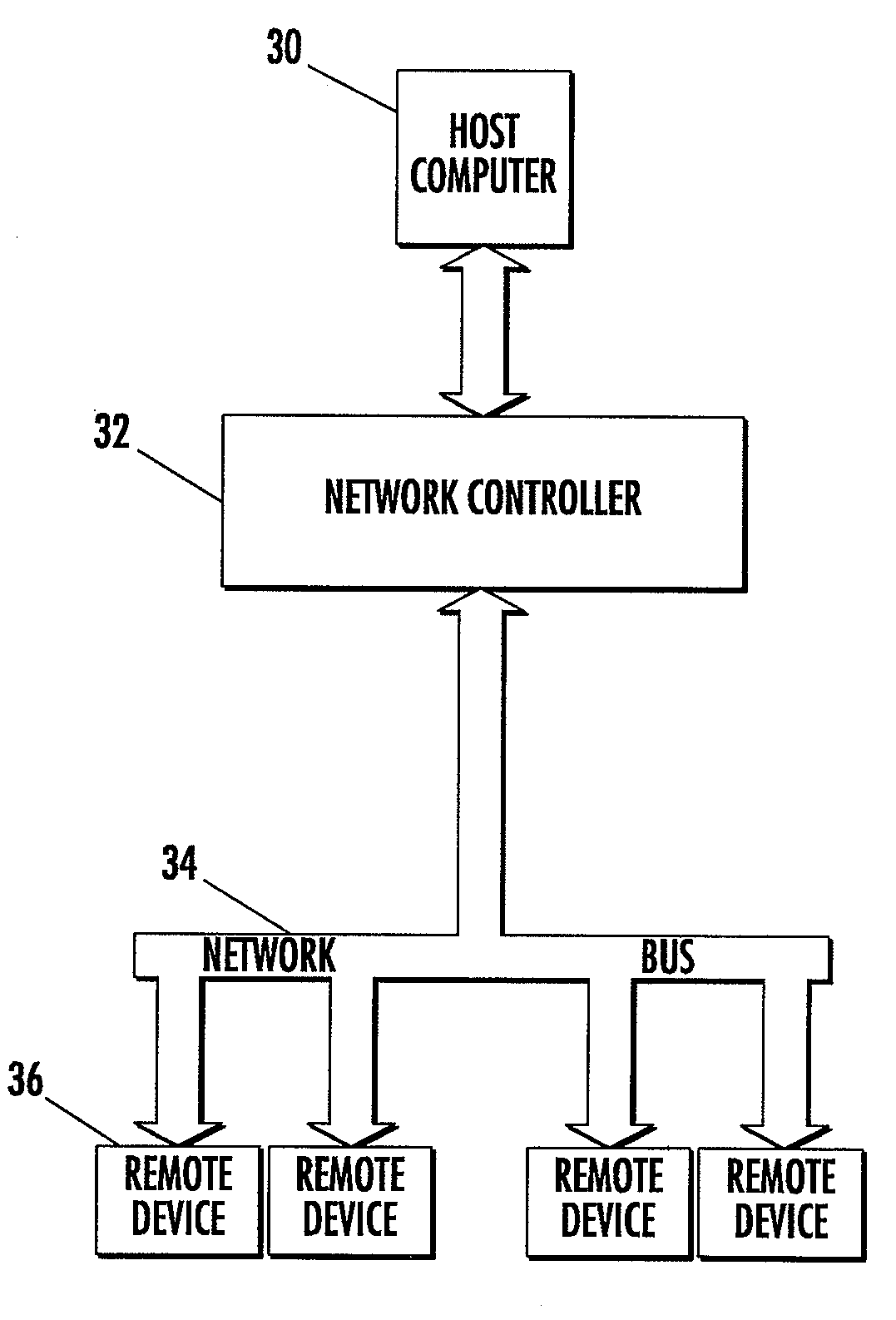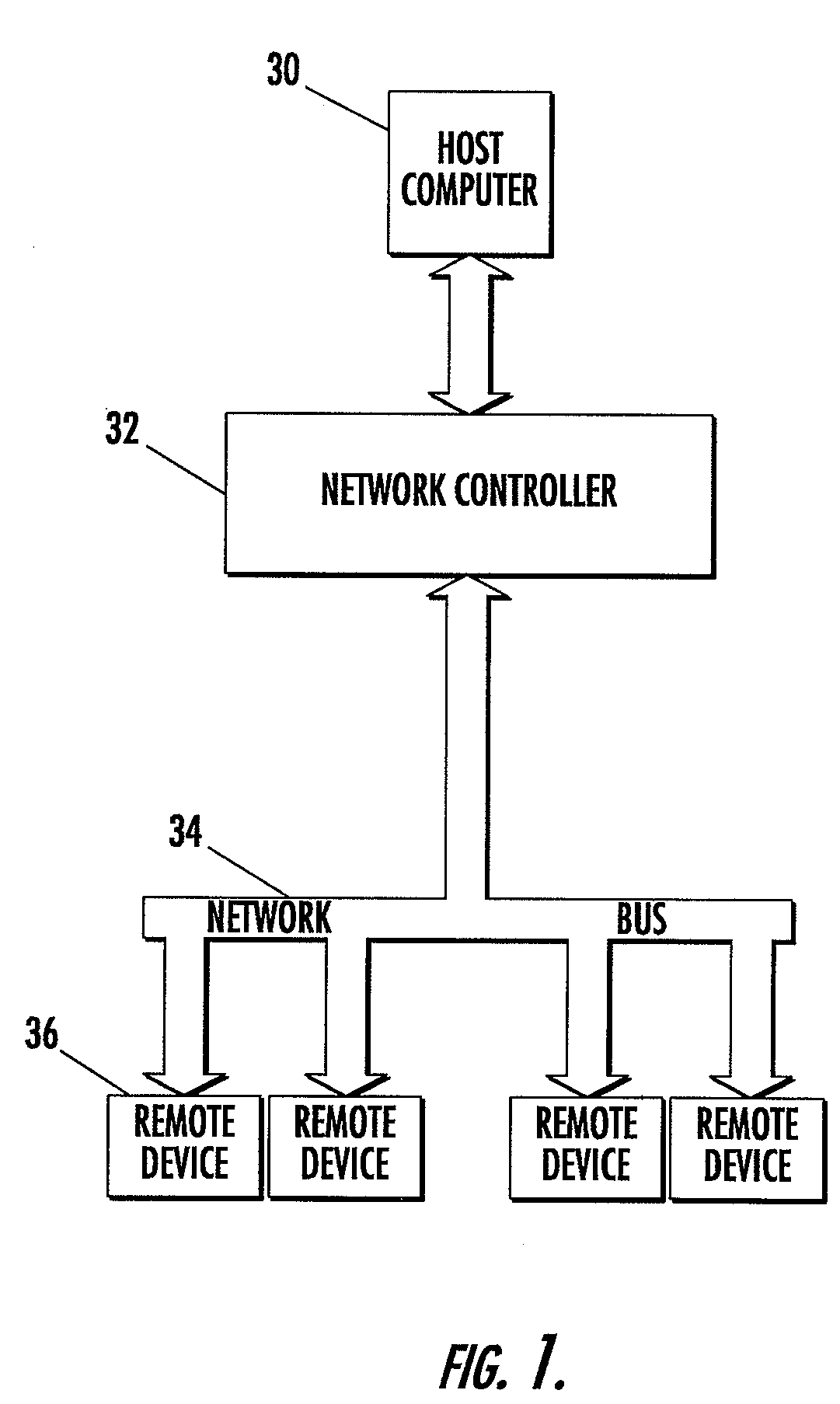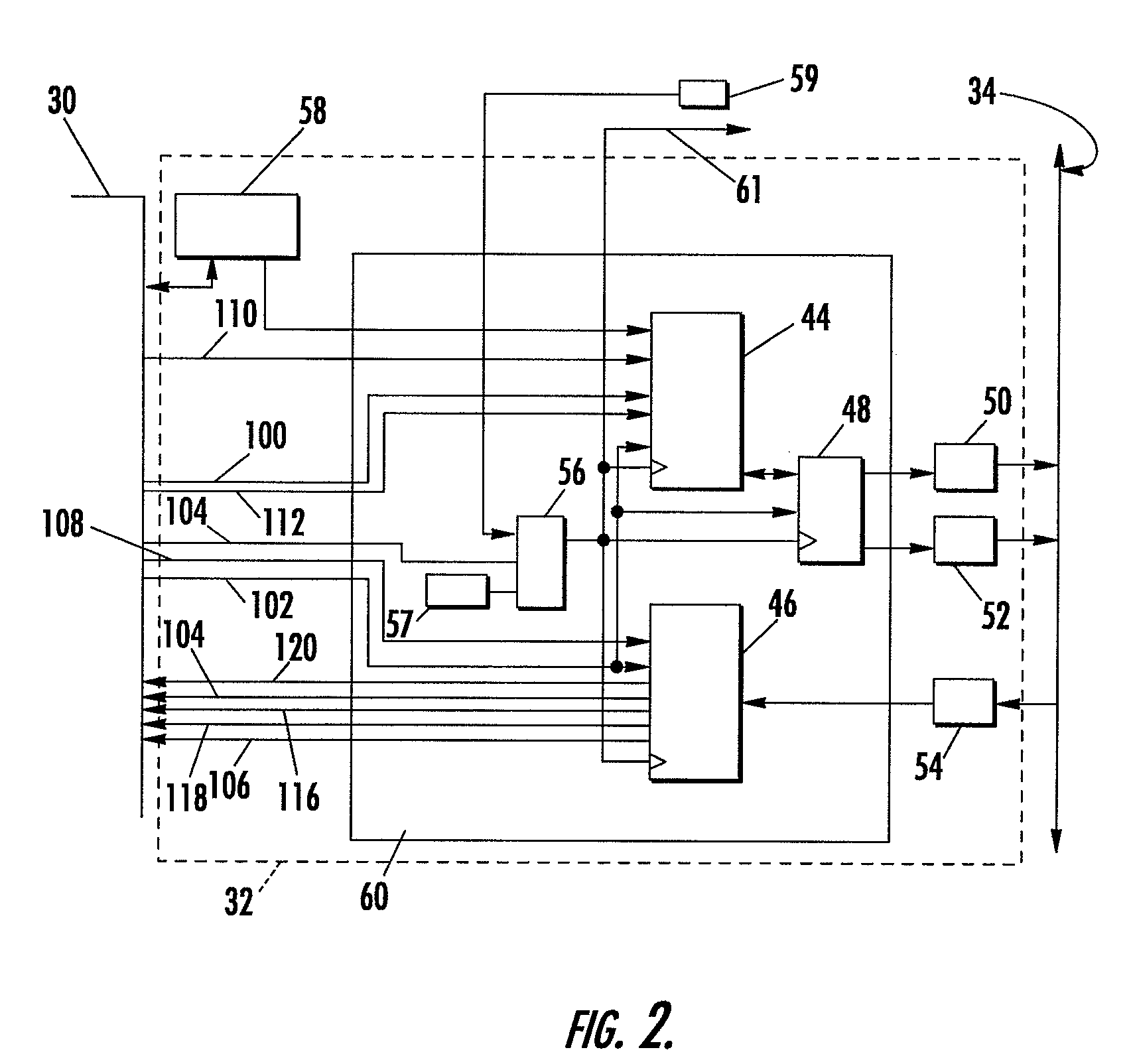Network controller for digitally controlling remote devices via a common bus
a network controller and remote device technology, applied in the field of network controllers, can solve the problems of many conventional monitoring systems that are impractical, many dedicated wiring and signal conditioning can be expensive, bulky, heavy, difficult to install and maintain, etc., and achieve the effects of low cost, low cost, and simple network protocol
- Summary
- Abstract
- Description
- Claims
- Application Information
AI Technical Summary
Benefits of technology
Problems solved by technology
Method used
Image
Examples
Embodiment Construction
[0025] The present invention now will be described more fully hereinafter with reference to the accompanying drawings, in which preferred embodiments of the invention are shown. This invention may, however, be embodied in many different forms and should not be construed as limited to the embodiments set forth herein; rather, these embodiments are provided so that this disclosure will be thorough and complete, and will fully convey the scope of the invention to those skilled in the art. Like numbers refer to like elements throughout.
[0026] As described above, many conventional analog network systems require separate sets of dedicated wires and signal conditioners to run from each component within the system, which can be expensive, bulky, heavy, hard to install and maintain, and suffer from signal degradation due to DC resistance of the wires and noise. Additionally, many conventional digital network systems demand complicated communication schemes requiring processors and, thus, su...
PUM
 Login to View More
Login to View More Abstract
Description
Claims
Application Information
 Login to View More
Login to View More - R&D
- Intellectual Property
- Life Sciences
- Materials
- Tech Scout
- Unparalleled Data Quality
- Higher Quality Content
- 60% Fewer Hallucinations
Browse by: Latest US Patents, China's latest patents, Technical Efficacy Thesaurus, Application Domain, Technology Topic, Popular Technical Reports.
© 2025 PatSnap. All rights reserved.Legal|Privacy policy|Modern Slavery Act Transparency Statement|Sitemap|About US| Contact US: help@patsnap.com



